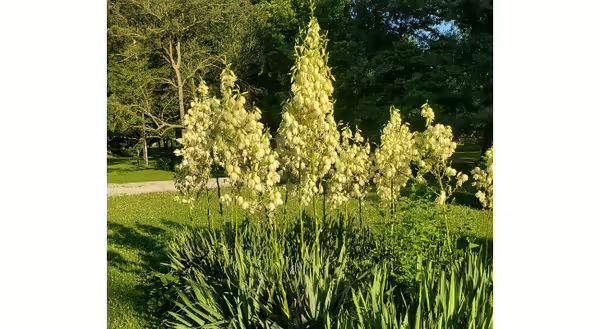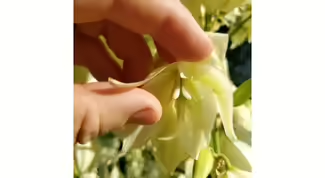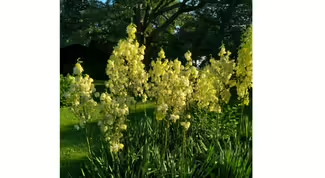
In the last few weeks, a peculiar plant has begun to draw attention as it reaches full bloom across central Illinois. While its towering flower stalks are certainly the main draw, closer inspection reveals unique and foreign-looking growth habit that seems like something right out of the desert.
Yucca (Yucca spp.) is a common garden specimen across the Midwest, planted for the unique ornamental attributes it offers with coarse, sword-like leaves arising from a basal rosette to create an evergreen canopy of exotic-looking leaves. Adding to the ornamental interest are partially detached, curly fibers along the leaf margins, which create a fine-textured accent. To me, the leaves appear similar to palm leaves, although they arise from a basal clump. The entire canopy of leaves only reaches around 2-3 ft. tall and equally as wide.
Yucca Blooms
Each year, in late spring or early summer, a single flower stalk arises from the center of each rosette. Creamy white, nodding flowers adorn each stalk in large clusters atop the towering stalks. Although foliage rarely exceeds 3 ft. tall, flower stalks typically reach 5-8 ft. in height, with individual stalks noted to be as tall as 12 ft. on some specimens.
The soaring flower stalks of yucca are often the most attention-getting attribute, seemingly coming out of nowhere from the shorter rosette of leaves and creating a nice contrast with the shorter foliage. However, the evergreen character of the leaves is another plant feature that attracts attention in winter. With such a tropical-looking appearance, it is a wonder to see this foliage in the snow!
Where Does Yucca Grow?
This plant is described as either a perennial or a shrub, based on where you seek information, noted as being hardy to Zone 5. It's not native to Illinois, although it has naturalized various locations statewide, meaning that it has escaped cultivation and successfully reproduced in a new environment but has not quite achieved invasive status. Yucca is native to the Southeastern US and Mexico where it frequents dry, sandy woodlands, dunes, sandy prairies, beaches and other dry, sandy locations.
Yucca performs well in the landscape, adapting to a wide range of conditions but preferring more dry sites and full sun, although tolerant of some shade. Poor drainage is perhaps its only weakness. This plant develops a very deep and robust tap root, which is one adaptation that makes it so widely adaptable but also a problem when removing established plantings. Yucca can be difficult to get rid of.
Pollinator Species
Yucca flowers are noted to attract butterflies but many of the pollinators associated with this plant are true specialists. While many of these species feed on leaves or stalks, perhaps the most noted relationship is that of the Yucca Moth (Tegeticula yuccasella).
Caterpillars of this moth feed exclusively on seeds of Yucca and adults are exclusive pollinators of this plant. The adult moths are so short-lived that they do not feed during their life stage. For that reason, they lack the typical long tongue (proboscis) of most moth and butterfly species, instead sporting specialized tentacles in its place. These specialized mouth parts are used to scrape pollen from the anthers of flowers and directly deposit it on the stigma of a different flower. This behavior helps both plant and animal proliferate as it ensures pollination of seeds so that caterpillars have a food source and the plant can perpetuate its numbers with viable seeds.
Questionable Classification
The taxonomic classification of Yucca has been called into question over the years, resulting in some confusion and disagreement among botanists. Early botanical descriptions of the plants in the eastern US implied two separate species, Y. filamentosa and Y. smalliana. Cases have been made for both as individual species and as varieties of one another. The result is that the common Yucca species of the eastern US are listed by a variety of scientific names across organizations and sources.
Whether it’s the mysterious name, its unique pollinator species, or its one-of-a-kind growth habit in the Eastern US, Yucca is a neat and interesting plant to include in garden spaces. Just remember that it has one heck of a tap root if you decide to remove it!

